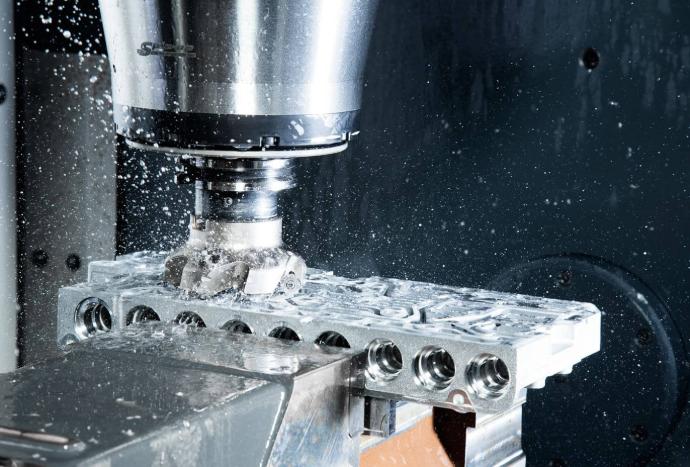
Did you know what role cutting fluids play in CNC machining?
This article introduces how cutting fluids are applied in CNC processes and their benefits.
Cutting Fluids for CNC Machining
Cutting fluids are substances specifically designed for metalworking and machining processes, serving as both lubricants and coolants. They can be applied during machining through overflow, fluid jets, sprays, or other methods.
Functions of Cutting Fluids in CNC Machining
- Cooling
During metal cutting, friction between the tool and workpiece generates heat in the workpiece, chips, and tool. Plastic deformation in the shear zone also produces heat. This heat can cause adverse effects, including thermal expansion, chemical reactions (e.g., oxidation), and surface welding. Cutting fluids help cool both the tool and workpiece to prevent these issues. - Lubrication
Friction is the main cause of heat during machining. Heat combined with friction tends to weld surfaces together. Cutting fluids form a thin layer between chips and the tool, reducing friction and contact. Lubrication also reduces tool wear and lowers energy consumption. - Increase Tool Life
By dissipating heat, reducing friction and wear, and preventing corrosion and rust, cutting fluids significantly extend tool life. - Prevent Corrosion
Rust inhibitors and corrosion retarders in cutting fluids protect machine parts and workpiece surfaces. Mineral oil-based cutting fluids form a thin protective layer on exposed surfaces to prevent oxidation. - Improve Surface Finish
Cutting fluids prevent thermal expansion and material property changes, helping achieve a better surface finish on machined parts. - Chip Removal
In some processes, such as milling and drilling, chips tend to accumulate around the cutting area, which can hinder cutting. Cutting fluids help flush away chips from the cutting zone.
Types of Cutting Fluids
Cutting fluids are classified based on composition, source, and application method:
- Water-Based Cutting Oils
These are made by mixing mineral oil with water (typically 1–20% oil). Other components include:- Emulsifiers such as sodium sulfonate to reduce water surface tension and mix oil and water
- Coupling or anti-corrosion additives
- Biocides to prevent bacterial growth
- Anti-wear additives to improve lubrication
- Oil-Based Cutting Oils
Pure mineral oils used without water. Initially, vegetable and animal oils were used as pure lubricants for metal cutting. While biodegradable and eco-friendly, they are expensive and decompose quickly, so now they are mainly used as additives to enhance lubrication. Mineral oils are petroleum-derived hydrocarbons and may contain chlorine, phosphorus, or sulfur additives for extreme-pressure lubrication. - Fully Synthetic Cutting Oils
Water-based fluids comparable to mineral and petroleum oils, composed of organic and inorganic compounds dissolved in water with additives like lubricants, rust inhibitors, and corrosion retarders. These additives improve performance otherwise affected by water content. - Semi-Synthetic Cutting Oils
A combination of synthetic, water-based, and soluble oils, containing 5–50% mineral oil and additives forming micro-emulsions (0.1–0.01 mm particle size). They combine the benefits of water-based and fully synthetic oils.
Key Properties of Quality Cutting Fluids
- High Thermal Conductivity:
Efficiently transfers heat from tool and workpiece. - High Heat Capacity:
Can absorb more heat before boiling. - Non-Corrosive:
Should not damage tools or workpieces. - Corrosion and Oxidation Resistant:
Prevents parts from rusting or oxidizing. - Low Viscosity:
Ensures fluid flow and prevents sludge formation with chips. - Non-Toxic:
Safe for humans and the environment. - Chemically Inert:
Does not react with surfaces. - Stable:
Should not degrade quickly during use or storage. - Odorless:
Avoids residual odors on machines or parts. - Clear (Transparent):
Allows observation of workpieces during machining.
Application and Usage in CNC Machining
- CNC Milling
The workpiece remains stationary while the cutting tool moves. Overflow application of cutting fluid is recommended. - CNC Drilling
Main purposes are chip removal and cooling. Lubrication is less critical due to low risk of built-up edge. Spray application is recommended. - CNC Turning
Occurs at high speeds, so cooling is crucial. Spray application is suitable, considering the rotating workpiece.
Choosing the Right Cutting Fluid for Your CNC Process
Workpiece Material
- Steel: Mineral oil with lubricant additives
- Alloy Steel: Sulfurized cutting oil or mineral oil
- Aluminum: Water-based or mineral oil without active sulfur (active sulfur can contaminate aluminum)
- Copper: Water-based cutting oil
- Stainless Steel: Mineral oil with extreme-pressure additives
- Cast Iron: None
- Tool Type
Carbide Tools: High heat generation; require synthetic cutting fluids with strong cooling
High-Speed Steel: Less heat; water-soluble or semi-synthetic cutting oils recommended - Machining Operation
Simple, high-speed operations (turning, milling, drilling): Full synthetic or water-soluble oils for cooling and moderate lubrication
Difficult, low-speed operations (broaching, threading): Mineral oil with extreme-pressure additives recommended
If you need cutting fluids or have any questions about CNC cutting fluids, please contact Taiwan Fimitech Co., LTD.!